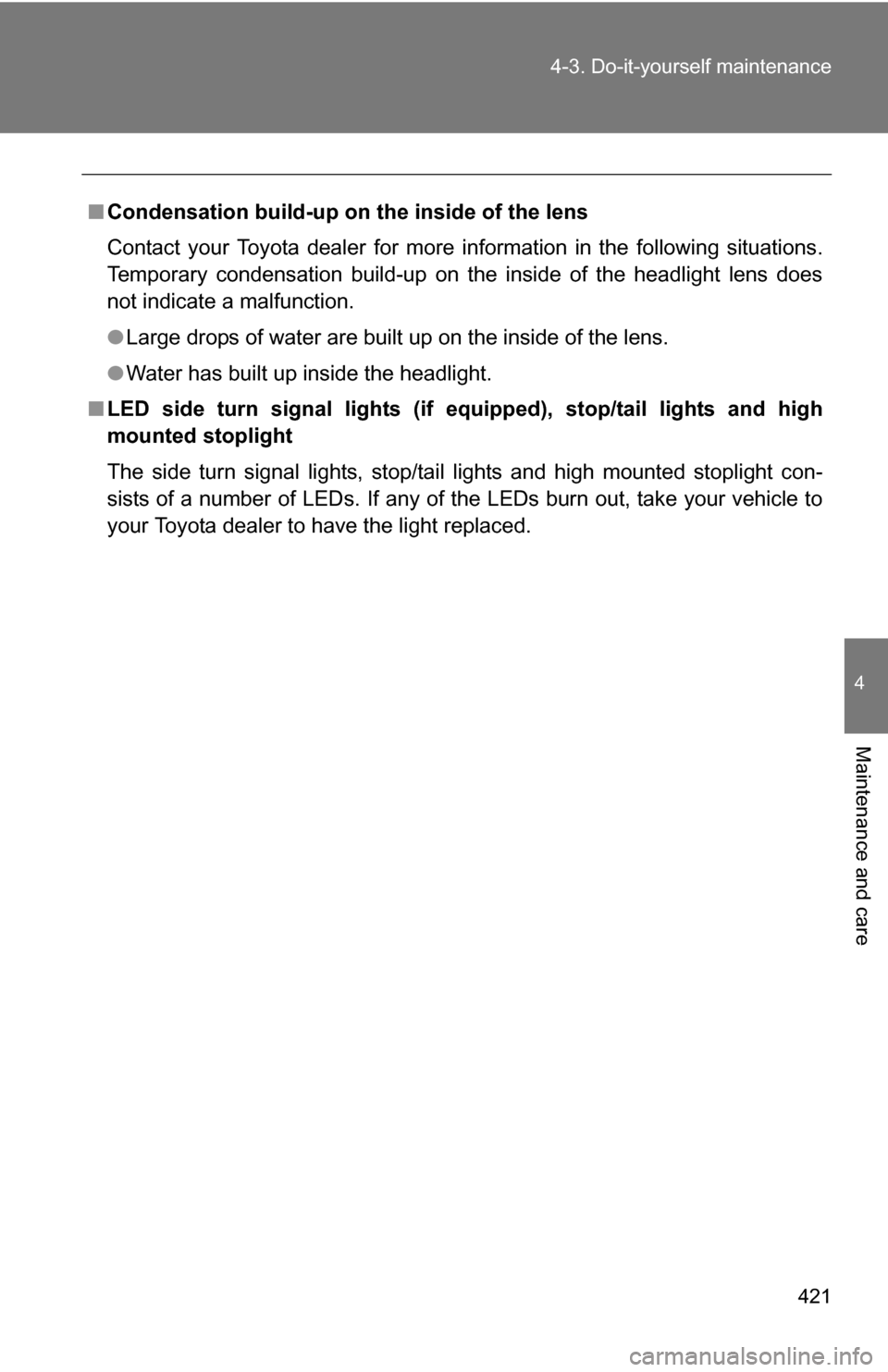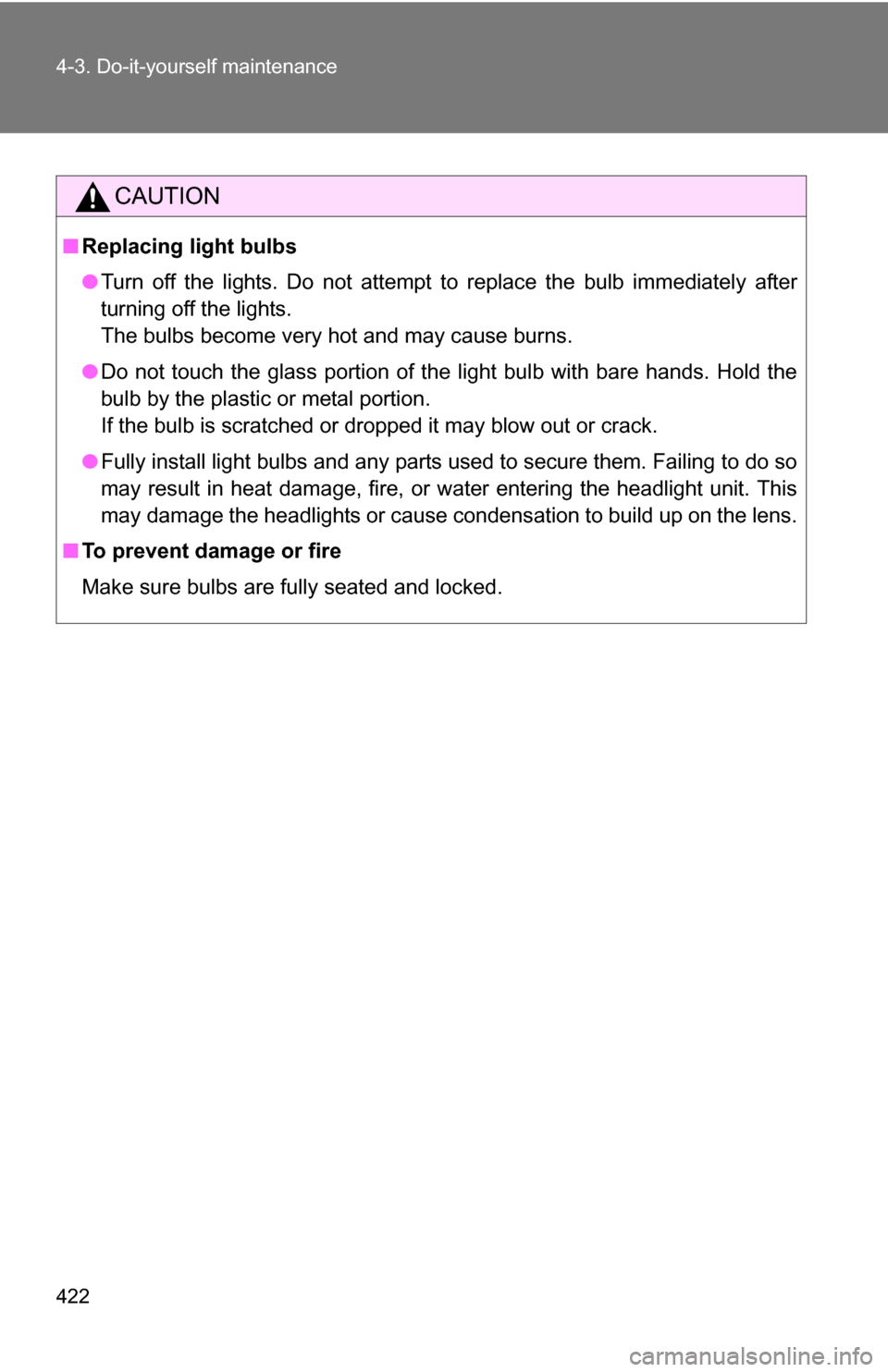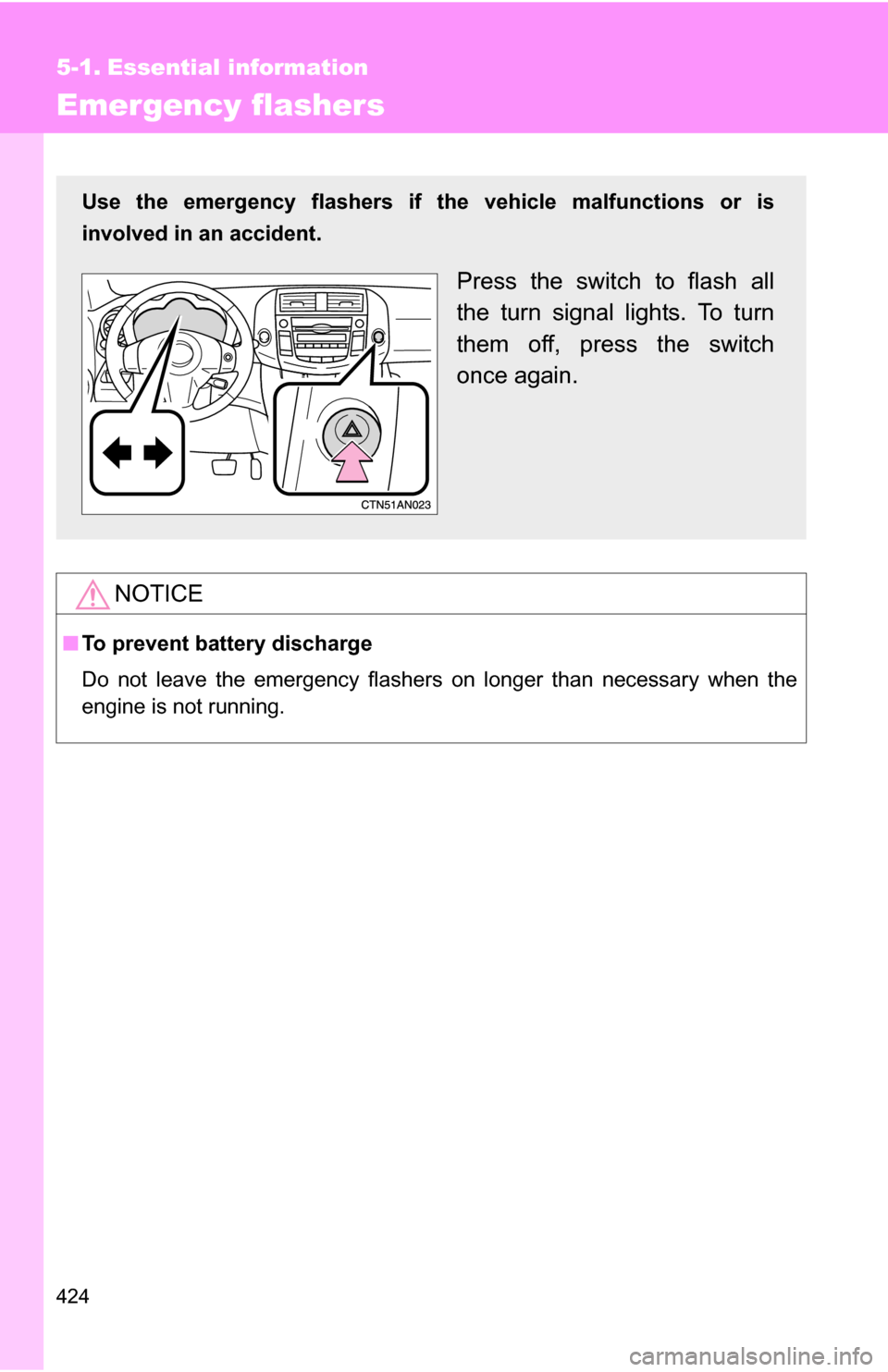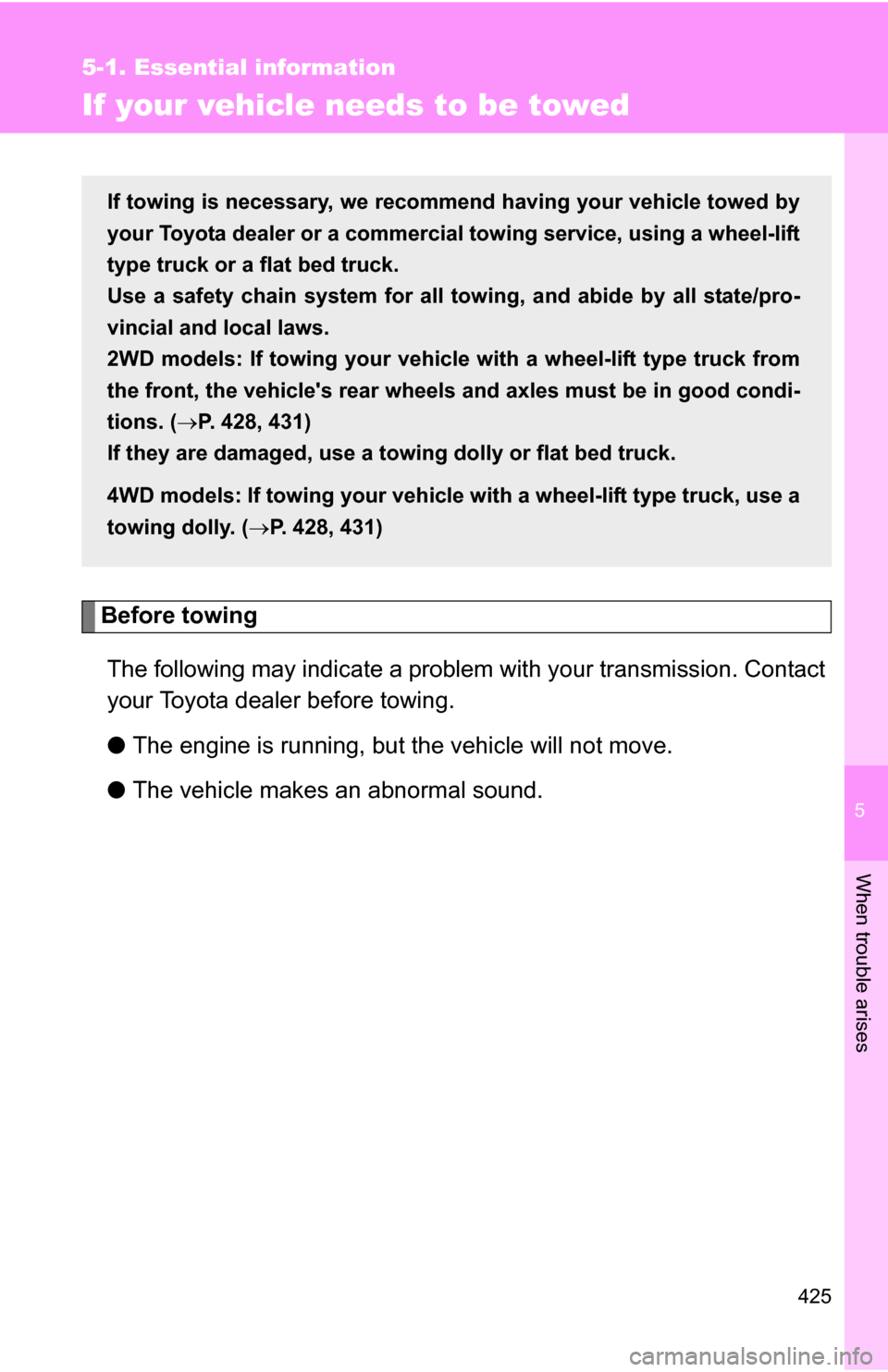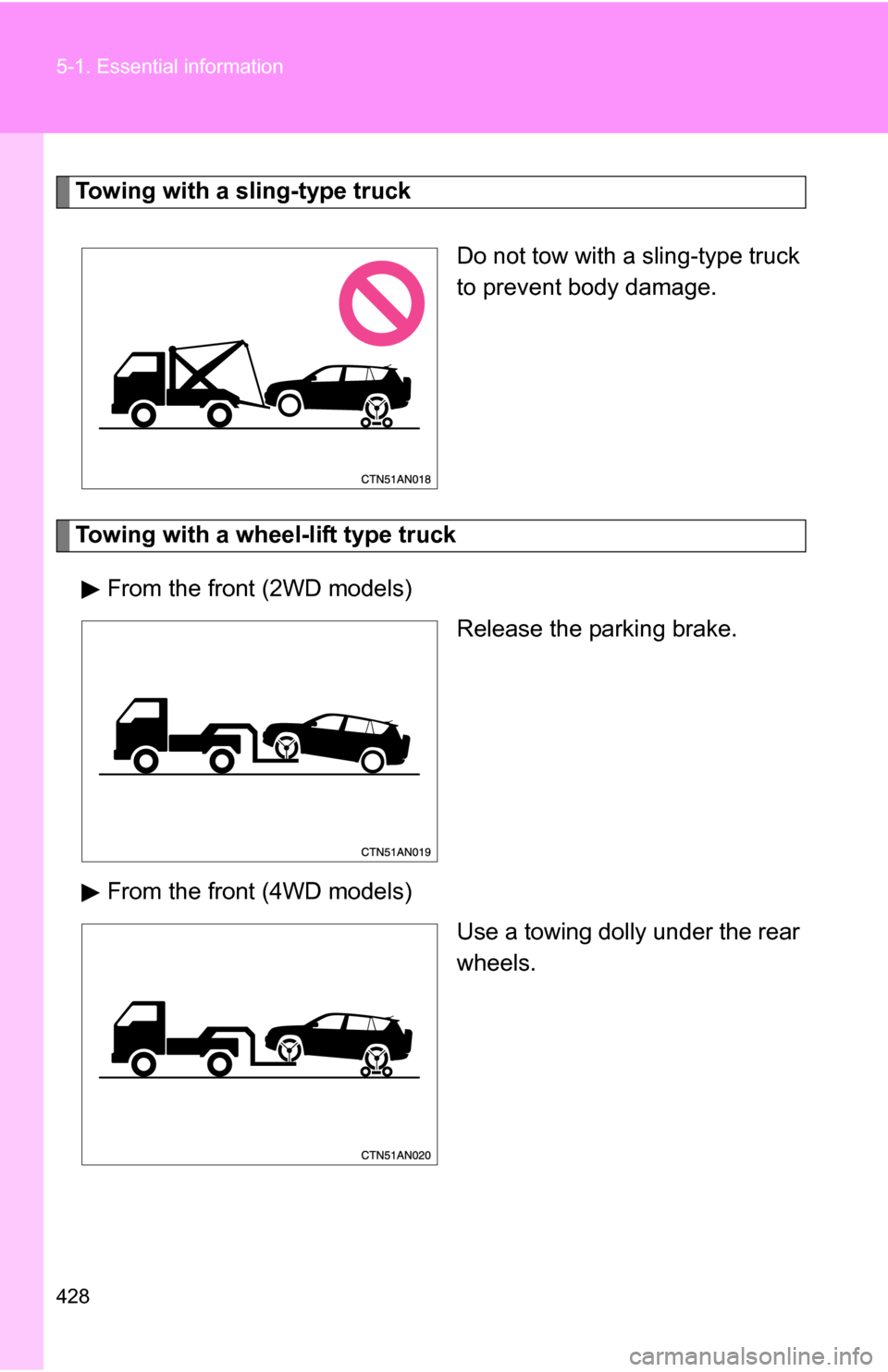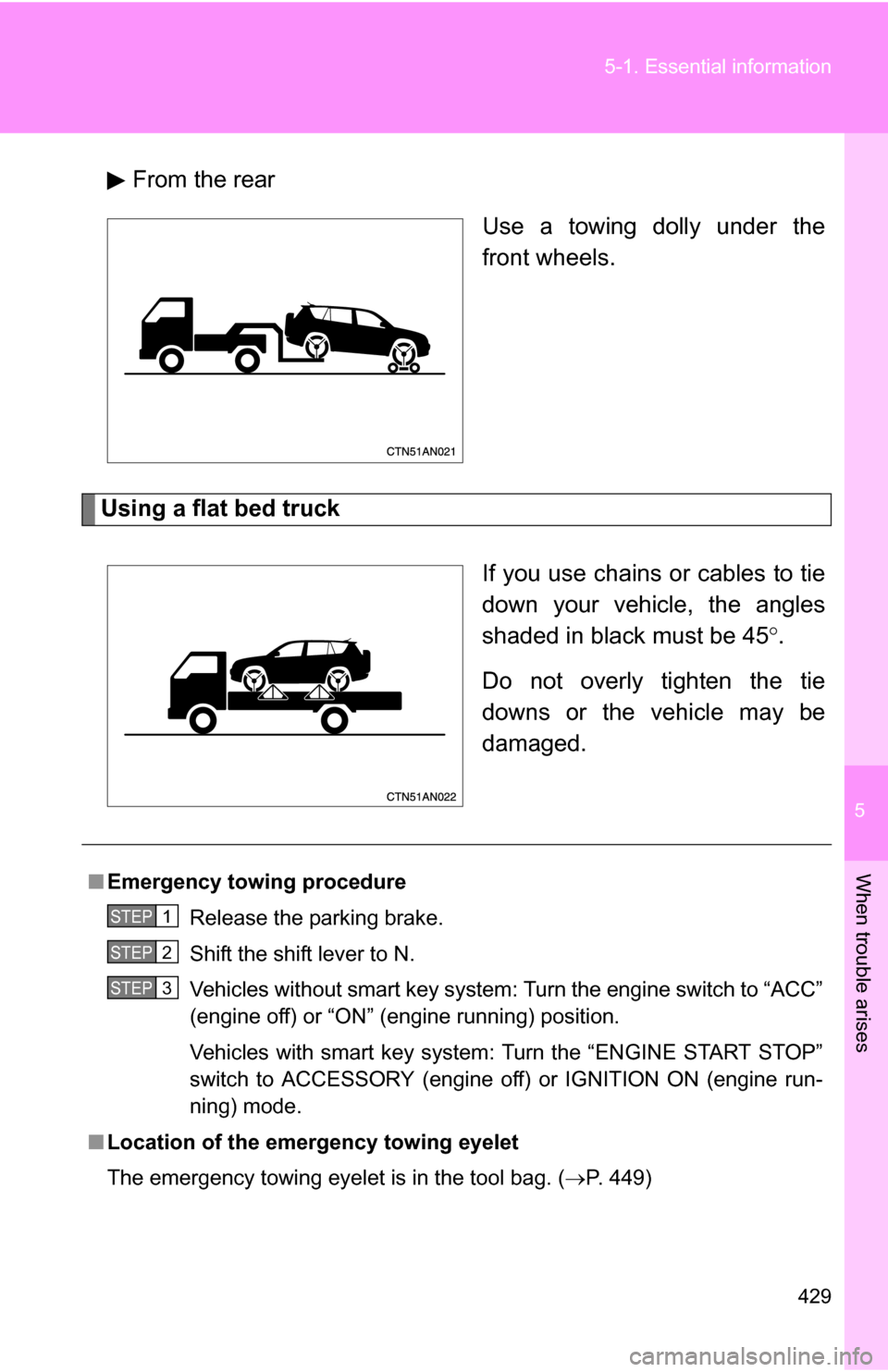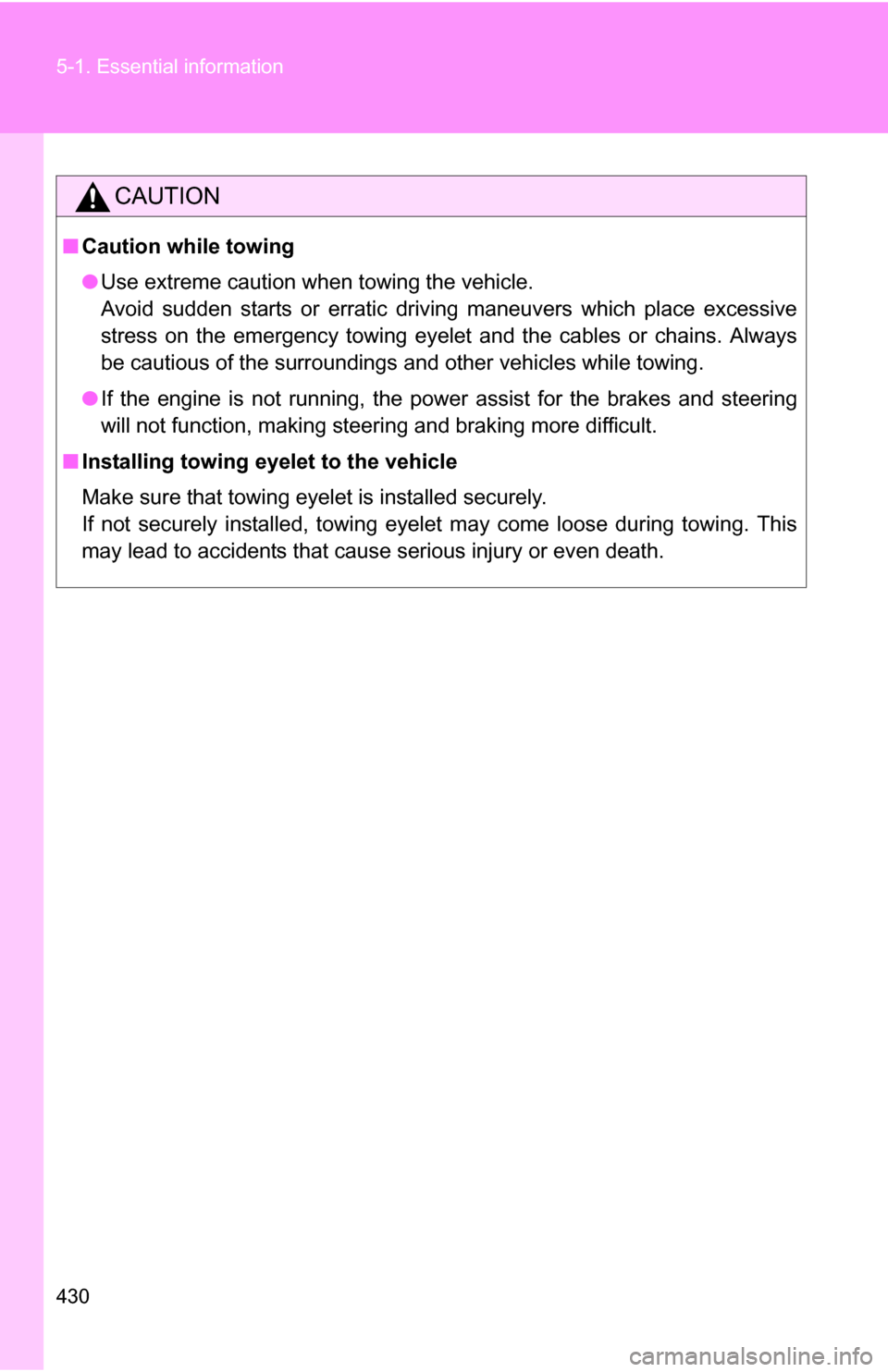TOYOTA RAV4 2012 XA30 / 3.G Owners Manual
RAV4 2012 XA30 / 3.G
TOYOTA
TOYOTA
https://www.carmanualsonline.info/img/14/6698/w960_6698-0.png
TOYOTA RAV4 2012 XA30 / 3.G Owners Manual
Trending: fog light, change key battery, service schedule, checking oil, ECO mode, octane, window
Page 421 of 544
421
4-3. Do-it-yourself maintenance
4
Maintenance and care
■
Condensation build-up on th e inside of the lens
Contact your Toyota dealer for more information in the following situations.
Temporary condensation build-up on the inside of the headlight lens does
not indicate a malfunction.
● Large drops of water are built up on the inside of the lens.
● Water has built up inside the headlight.
■ LED side turn signal lights (if equipped), stop/tail lights and high
mounted stoplight
The side turn signal lights, stop/tail lights and high mounted stoplight con-
sists of a number of LEDs. If any of the LEDs burn out, take your vehicle to
your Toyota dealer to have the light replaced.
Page 422 of 544
422 4-3. Do-it-yourself maintenance
CAUTION
■Replacing light bulbs
●Turn off the lights. Do not attempt to replace the bulb immediately after
turning off the lights.
The bulbs become very hot and may cause burns.
● Do not touch the glass portion of the light bulb with bare hands. Hold the
bulb by the plastic or metal portion.
If the bulb is scratched or dropped it may blow out or crack.
● Fully install light bulbs and any parts used to secure them. Failing to do so
may result in heat damage, fire, or water entering the headlight unit. This
may damage the headlights or cause condensation to build up on the lens.
■ To prevent damage or fire
Make sure bulbs are fully seated and locked.
Page 423 of 544
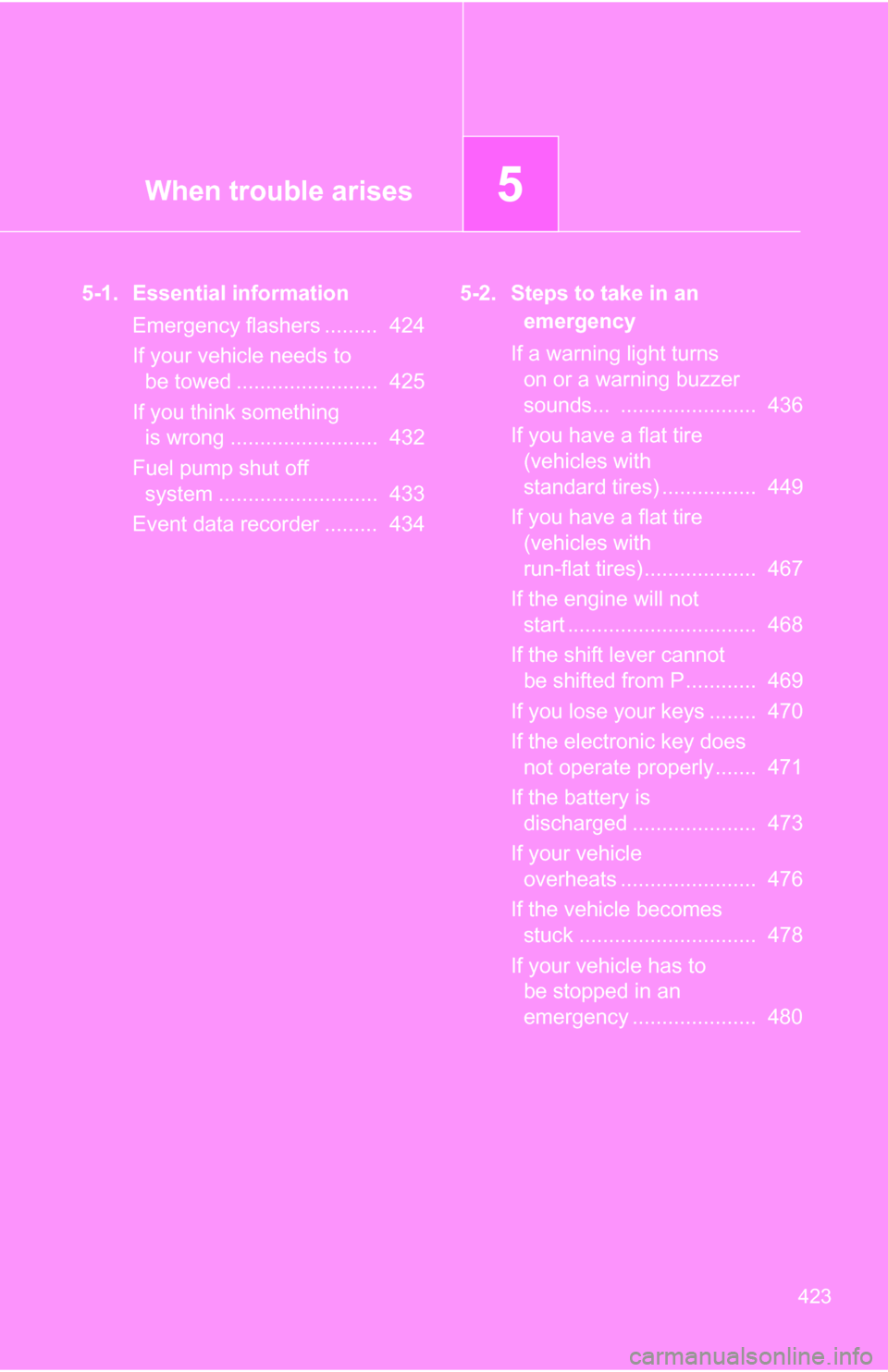
When trouble arises5
423
5-1. Essential informationEmergency flashers ......... 424
If your vehicle needs to be towed ........................ 425
If you think something is wrong ......................... 432
Fuel pump shut off system ........................... 433
Event data recorder ......... 434 5-2. Steps to take in an
emergency
If a warning light turns on or a warning buzzer
sounds... ....................... 436
If you have a flat tire (vehicles with
standard tires) ................ 449
If you have a flat tire (vehicles with
run-flat tires)................... 467
If the engine will not start ................................ 468
If the shift lever cannot be shifted from P............ 469
If you lose your keys ........ 470
If the electronic key does not operate properly....... 471
If the battery is discharged ..................... 473
If your vehicle overheats ....................... 476
If the vehicle becomes stuck .............................. 478
If your vehicle has to be stopped in an
emergency ..................... 480
Page 424 of 544
424
5-1. Essential information
Emergency flashers
NOTICE
■To prevent battery discharge
Do not leave the emergency flashers on longer than necessary when the
engine is not running.
Use the emergency flashers if th e vehicle malfunctions or is
involved in an accident.
Press the switch to flash all
the turn signal lights. To turn
them off, press the switch
once again.
Page 425 of 544
5
When trouble arises
425
5-1. Essential information
If your vehicle needs to be towed
Before towingThe following may indicate a problem with your transmission. Contact
your Toyota dealer before towing.
● The engine is running, but the vehicle will not move.
● The vehicle makes an abnormal sound.
If towing is necessary, we recommend having your vehicle towed by
your Toyota dealer or a commercial towing service, using a wheel-lift
type truck or a flat bed truck.
Use a safety chain system for all to wing, and abide by all state/pro-
vincial and local laws.
2WD models: If towing your vehicle with a wheel-lift type truck from
the front, the vehicle's rear wheels and axles must be in good condi-
tions. ( P. 428, 431)
If they are damaged, use a towing dolly or flat bed truck.
4WD models: If towing your vehicle with a wheel-lift type truck, use a
towing dolly. ( P. 428, 431)
Page 426 of 544
426 5-1. Essential information
Emergency towingIf a tow truck is not available, in an emergency your vehicle may be
temporarily towed using a cable or chain secured to the emergency
towing eyelet. This should only be attempted on hard surfaced roads
for short distances at low speeds.
A driver must be in the vehicle to steer and operate the brakes. The
vehicle’s wheels, drive train, axles, steering and brakes must be in
good condition.
Towing eyelet
Page 427 of 544
5
When trouble arises
427
5-1. Essential information
Installing towing eyelet
Remove the eyelet cover using a
flathead screwdriver.
To protect the bodywork, place a
rag between the screwdriver and
the vehicle body, as shown in the
illustration.
Insert the towing eyelet into the
hole and tighten partially by
hand.
Tighten down the towing eyelet
securely using a wheel nut
wrench.
STEP 1
STEP 2
STEP 3
Page 428 of 544
428 5-1. Essential information
Towing with a sling-type truckDo not tow with a sling-type truck
to prevent body damage.
Towing with a wheel-lift type truckFrom the front (2WD models) Release the parking brake.
From the front (4WD models) Use a towing dolly under the rear
wheels.
Page 429 of 544
5
When trouble arises
429
5-1. Essential information
From the rear
Use a towing dolly under the
front wheels.
Using a flat bed truck
If you use chains or cables to tie
down your vehicle, the angles
shaded in black must be 45.
Do not overly tighten the tie
downs or the vehicle may be
damaged.
■ Emergency towin g procedure
Release the parking brake.
Shift the shift lever to N.
Vehicles without smart key system: Turn the engine switch to “ACC”
(engine off) or “ON” (engine running) position.
Vehicles with smart key system: Turn the “ENGINE START STOP”
switch to ACCESSORY (engine off) or IGNITION ON (engine run-
ning) mode.
■ Location of the emer gency towing eyelet
The emergency towing eyelet is in the tool bag. ( P. 449)
STEP 1
STEP 2
STEP 3
Page 430 of 544
430 5-1. Essential information
CAUTION
■Caution while towing
●Use extreme caution when towing the vehicle.
Avoid sudden starts or erratic driving maneuvers which place excessive
stress on the emergency towing eyelet and the cables or chains. Always
be cautious of the surroundings and other vehicles while towing.
● If the engine is not running, the power assist for the brakes and steering
will not function, making steering and braking more difficult.
■ Installing towing eyelet to the vehicle
Make sure that towing eyelet is installed securely.
If not securely installed, towing eyelet may come loose during towing. This
may lead to accidents that cause serious injury or even death.
Trending: airbag off, wiper blades, remove seats, fuel consumption, adding oil, check oil, trailer
